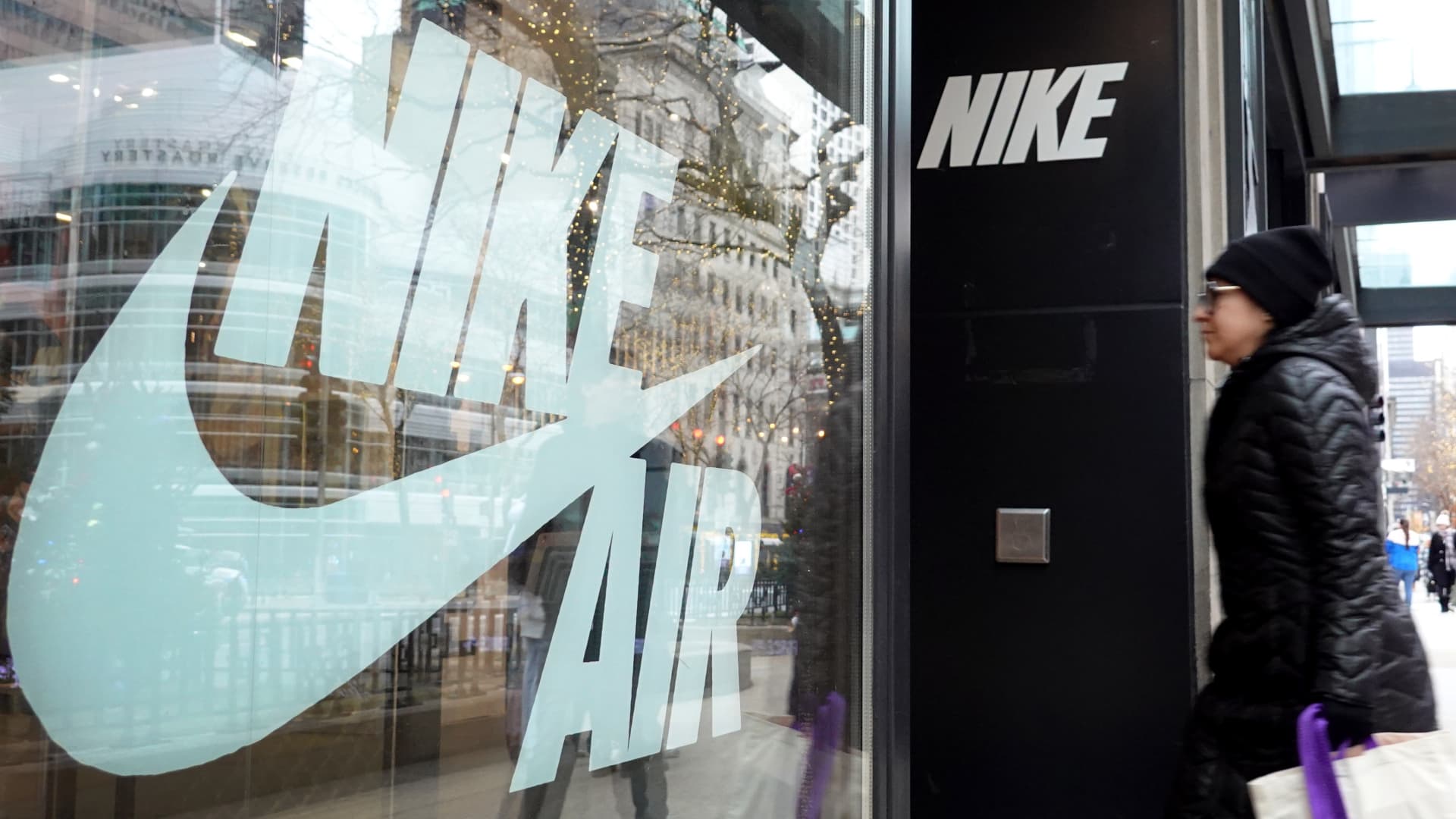
A customer enters a Nike store along the Magnificent Mile shopping district on December 21, 2022 in Chicago, Illinois.
Scott Olson | Getty Images
Nike on Thursday unveiled plans to cut costs by about $2 billion over the next three years.
The sneaker giant plans to simplify its product assortment, increase automation and its use of technology, streamline the overall organization and leverage its scale “to drive greater efficiency,” the company said in a news release when announcing fiscal second quarter earnings.
“As we look ahead to a softer second-half revenue outlook, we remain focused on strong gross margin execution and disciplined cost management,” finance chief Matthew Friend said in a statement.
The plan will cost the company $400 million to $450 million in pre-tax restructuring charges that will largely come to fruition in Nike’s current quarter. Those costs are largely related to employee severance costs, Nike said.
The stock fell about 5% after hours.
Earlier this month, The Oregonian reported that Nike had been quietly laying off employees over the past several weeks and had signaled that it was planning for a broader restructuring. A series of divisions saw cuts, including recruitment, sourcing, brand, engineering, human resources and innovation, the outlet reported.
All eyes have been on Nike’s gross margin after six straight quarters of year-over-year declines. Supply chain bottlenecks, bloated inventories, high freight expenses and soaring markdowns have all weighed on Nike’s profits and investors are eager to see that trend turnaround.
This time last year, Nike’s inventories were up a staggering 43% and the retailer was in the midst of an aggressive liquidation strategy to clear out old styles and make way for new ones, which weighed heavily on its margins. Several quarters later, however, Nike is in a far better inventory position, which could prove to be a boon for margins.
Still, the retail environment overall has been flooded with steep promotions and discounts as retailers struggle to convince inflation-weary consumers to pay full price. In September when Nike reported fiscal first quarter earnings, finance chief Matthew Friend said Nike was “cautiously planning for modest markdown improvements” given the overall promotional environment.
As one of the last retailers to report earnings before the December holidays, investors are eager to hear good news when it comes to Nike’s expectations for the crucial shopping season. When many retailers issued holiday quarter guidance in November, the commentary was largely tepid and cautious as companies looked to under promise and over deliver in an increasingly uncertain macro environment.
China is another key part of the Nike story. As the region emerges from the Covid pandemic and widespread lockdowns, China’s economic recovery has so far been a mixed bag. In November, retail sales climbed 10.1% in the region.
It was the fastest pace of growth since May but those numbers were up against easy comparables and the growth was largely driven by car sales and restaurants, according to a research note from Goldman Sachs. How Nike performed in the region will give investors insight into the Chinese consumer and how the region fits in to the retailer’s strategy in both the short and long terms.
Read the full earnings release here.
This is a developing story. Check back for updates.







